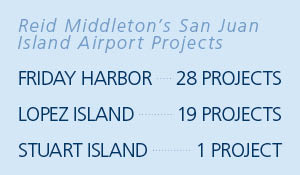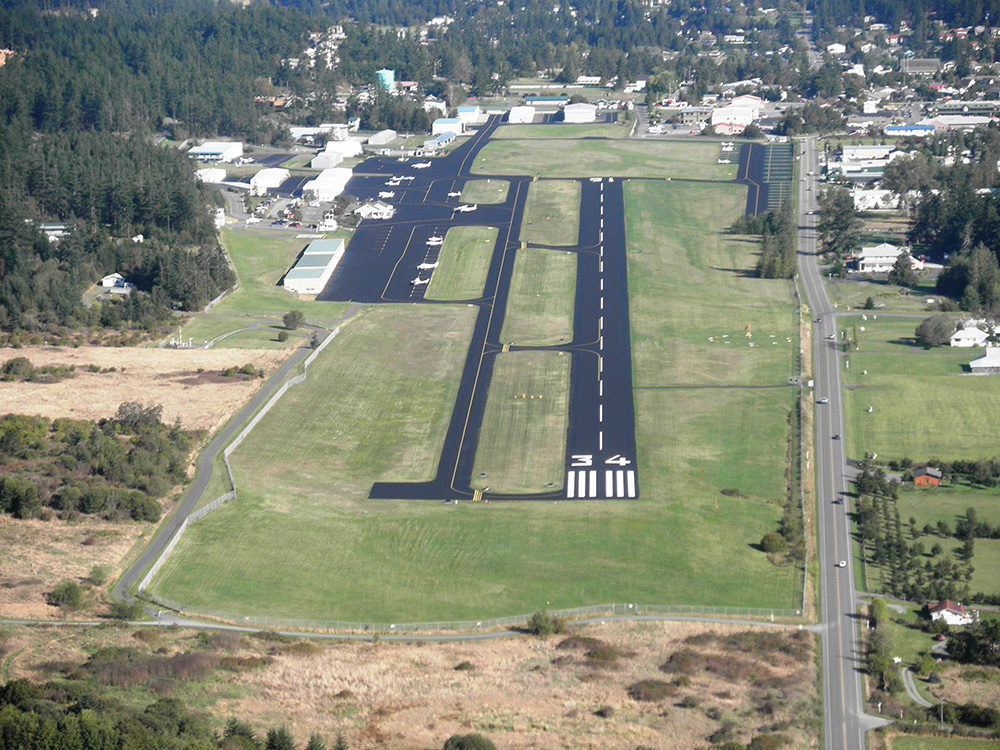Washington’s San Juan Islands are home to spectacular views, vast wilderness and wildlife, small town culture, and historic accommodations, and they are a Northwest treasure that everyone should visit. Your choices for getting there are limited, due to the fact that they are, well, islands. You can either boat in (ferry, canoe, kayak, cruise ship are all possibilities), or you can fly in. Since the jet-pack hasn’t become that common of an air travel option, you’re probably looking at booking a flight on an airplane.
Those airplanes need a place to land and take off (obviously), and that means somebody has to figure out a way to make that happen, when getting the needed supplies to the construction site is such a challenge. It’s probably no surprise that engineering airfields in remote island locations is no easy feat.
Island Construction Limitations
Access is, of course, a significant limitation for construction in an island setting. Everything that is not available on island must be brought to the island by ferry, barge, or airplane which is expensive – especially for bulky items or soil, aggregates, and paving materials. To give you an idea of the magnitude of materials needed, rehabilitating a runway could take up to 13,000 tons of asphalt, which equates to over 300 dump truck loads of asphalt materials. Placed end to end, they would extend over a distance of about five miles. Considering the size of the islands (San Juan Island, home to Friday Harbor Airport, is 55 square miles in area; Lopez Island is just under 30 square miles in area), a runway rehabilitation is a significant civil engineering endeavor.
On-island limitations typically include the lack of an asphalt plant and limited aggregate material sources that can meet FAA requirements. Aggregate limitations have included inadequate rock soundness, difficulty in maintaining proper aggregate gradations, and difficulty obtaining proper compaction.
Transportation for equipment and workers is also expensive. This includes not only the cost of the mode of transportation but the travel time involved. The mobilization costs for island construction can be significant. These factors have a considerable impact on construction costs, and bid prices reflect these increased costs.
Weather plays a greater role in the timely completion of a project because it affects travel time; and there may be fewer bidders for island projects because contractors may be unwilling to go the distance.
San Juan Airports – Reid Middleton airport engineering design for over 30 years
Secrets to Success
There are a number of things that can aid in managing engineering projects in an island setting.
- Use local subconsultants to the extent possible. While the availability of technical consultants in these settings may be limited, it is always worth looking for the local connection. We have found environmental and surveying specialists on island in our San Juan projects.
- Prepare designs using local island material sources and tailoring design parameters to meet local conditions while providing long-term performance. Our recent taxiway rehabilitation project at the Lopez Island Airport is an example where we successfully utilized local material sources to keep costs down while still providing design parameters meeting FAA criteria.
- Stay on the job site during the project construction periods to provide daily construction observation. Our staff routinely stay on the job; it is common for our airport engineers to be working at temporary field offices.
- Modify standard construction practices to accommodate on-island construction, when necessary. Take into account the cost of on-island construction in order to prepare valid cost estimates and provide for adequate project funding.
- Having limited resources on island makes it more important to consider recycling on construction projects. Depending on the options available, this could reduce the need to bring topsoil material to the airport from off island and provide cost savings and sustainable solutions for the airport improvements. Among other things, we have used existing asphalt as part of the base for new pavement.
The prospect of designing and managing a project in a remote location can be daunting, and it certainly requires an advanced level of effort and planning to do well. But, you can’t beat seeing Orcas breach or having Cascade and island vistas in full view from your work site.
To plan your trip to this invigorating destination, one key decision is how you’ll get there. Will it be by boat? Or, will it be by plane?

